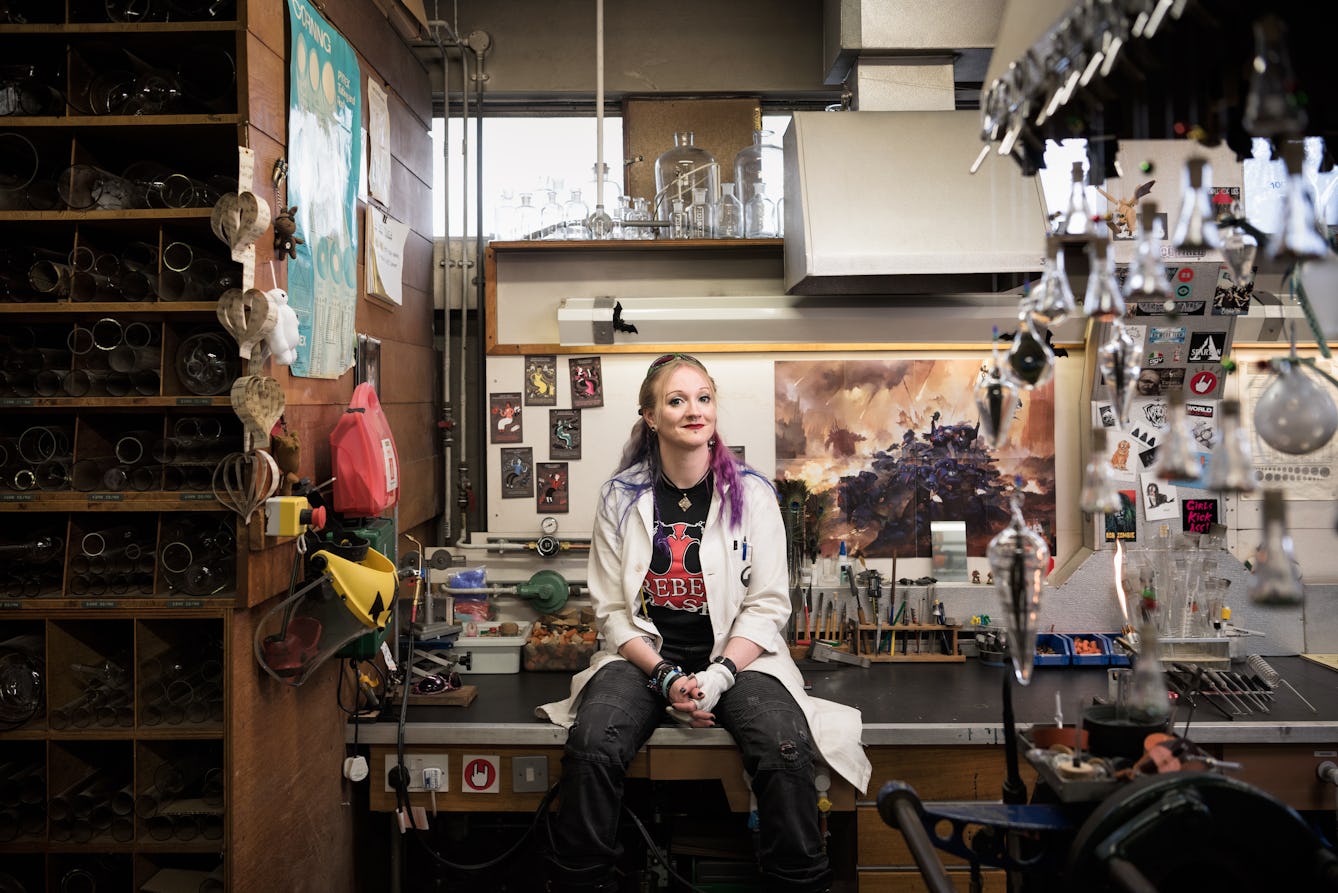Stories

- Article
The shifting shape of language
Author Jessica Andrews explores how her brother’s deafness has influenced her relationship with words and the world.

- Article
The healing power of breathing
The healing powers of different breathing methods are said to help with a range of health challenges, from asthma to PTSD. Effie Webb traces their spiritual origins and explores the modern proliferation of breathwork therapies.

- Article
The hell of hay fever
After years suffering in silence, David Jesudason finds speaking out about his pollen allergy gives him hope for a future where his hay-fever symptoms are under control.

- Article
The art of scientific glassblowing
Exciting things happen when art, craft, engineering and science collide. Glassblower Gayle Price is proof of that.
Catalogue
- Archives and manuscripts
The SMAE Institute Post Graduate School of Physiotherapy
Date: 1990sReference: SA/CSP/C.2/9/34Part of: Chartered Society of Physiotherapy- Archives and manuscripts
- Online
Cornell University Graduate School of Medical Sciences
Date: 1976-1977Reference: JDW/2/2/387Part of: James D. Watson Collection- Books
Symposium on Stress / sponsored jointly by Division of Medical Sciences, National Research Council and the Army Medical Service Graduate School, Walter Reed Army Medical Center, 16-18 March 1953.
Symposium on Stress (1953 : Washington, D.C.)Date: 1953- Archives and manuscripts
- Online
University of Pennsylvania - 75th Anniversary of the Graduate School
Date: 1958-1959Reference: SB/11/1/166Part of: Sydney Brenner Collection
- Books
- Online
Pellagra : first progress report of the Thompson-McFadden Pellagra Commission of the New York Post-Graduate Medical School and Hospital / by J.F. Siler [and others].
Siler, J. F. (Joseph Franklin), 1875-1960.Date: [1913]




![Salvia nemorosa L. Lamiaceae Woodland sage. Balkan clary Distribution: Central Europe, Western Asia. Most of the historical medicinal literature is on common sage, Salvia officinalis. The name Salvia meaning 'healthy'. Elizabeth Blackwell (1737) wrote that it had "... all the noble Properties of the other hot Plants more especially for the Head, Memory, Eyes, and all Paralytical Affections. In short, 'tis a Plant endu'd with so many and wonderful Properties, as that the assiduous use of it is said to render Men Immortal" with which Hans Sloane agreed. Linnaeus (1782) also: 'Timor, Languor, Leucorrhoea, Senectus [fear, tiredness, white vaginal discharge, old age]'. Its health giving and immortality conferring properties were recorded in the aphorisms of the School of Salerno (fl 9-13th century) - quoted in the Decameron [c.1350, translated: Why should man die when Salvia grows in the Garden']. Some salvias, such as Salvia divinorum contain hallucinogenic compounds. Photographed in the Medicinal Garden of the Royal College of Physicians, London.](https://iiif.wellcomecollection.org/image/B0009180/full/282%2C/0/default.jpg)




